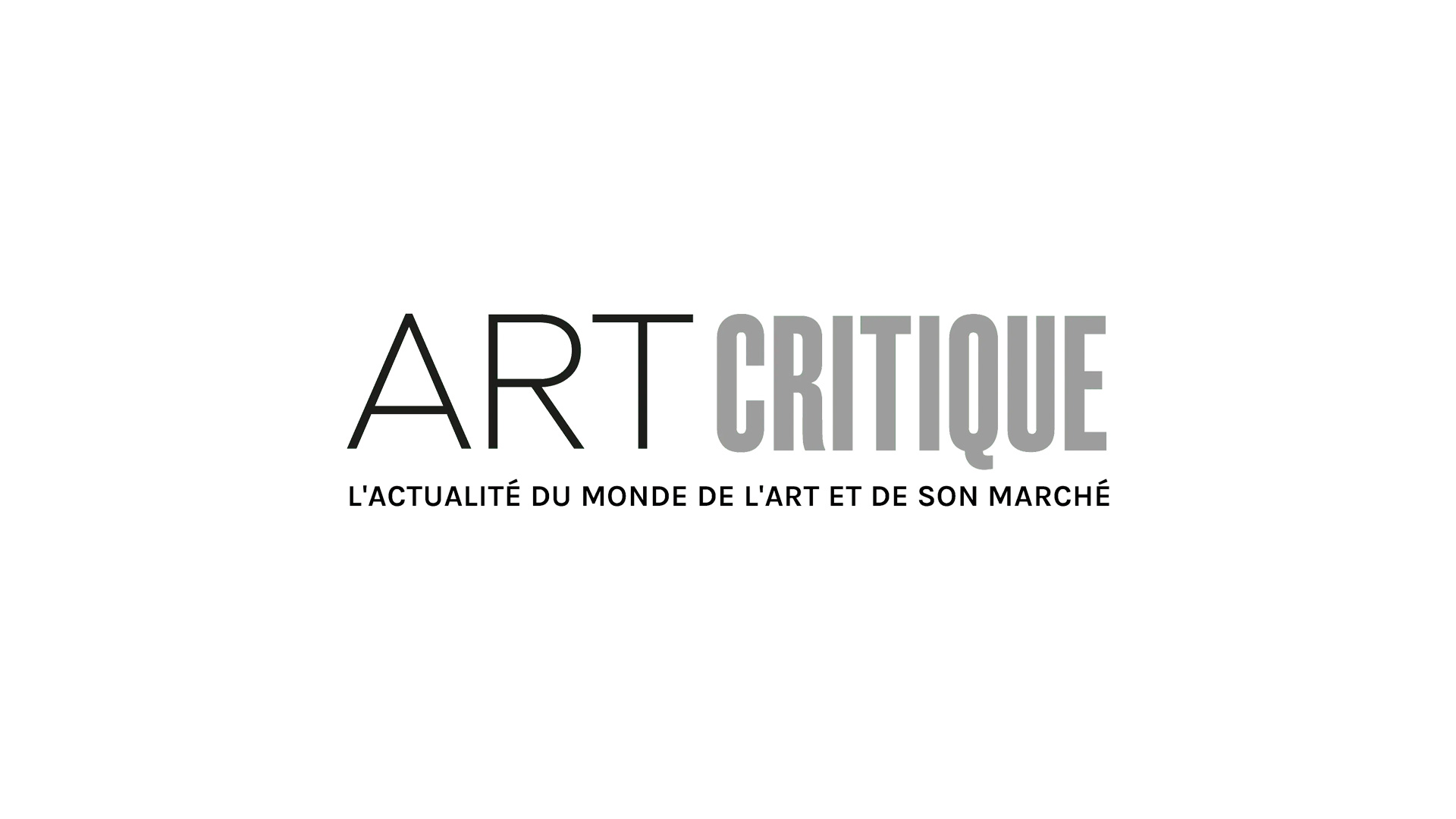As part of the PHoto Espana festival, the Madrid Cultural Centre is hosting an exhibition featuring British artist Clare Strand until July 1.
Known for her black and white photographs of people taking on unrealistic poses (Conjurations, 2007-2009) or posing in front of strange backgrounds (Gone Astray Portraits, 2002-2003), the artist presents a collection of her work including photos, paintings, screenings and installations. Entitled The Discrete Channel with Noise, this exposition is consistent with Strand’s research which over the years has focused on the status of images and, more precisely. the origins, uses and limits of photography.
For this series which was produced in 2017, the artist sought to concentrate on this medium not just as an object of information transmission but more importantly as an object capable of spreading misinformation by establishing a painting system using photography as a starting point to demonstrate how data is lost. In residence at the CPIF (Centre photographique d’Île de France), she asked her husband living in England to select a dozen or so images from among 35 black and white photos collected over about 20 years. She then began to attach them to a grid pattern made on a sheet of transparent plastic and then to assign each square a number corresponding to the tonality of the underlying image (ranging from 1 for white to 10 for black). Her spouse was then required to call her on the phone and recite the assigned numbers line by line. On her end, Strand, traced an identical matrix but on a larger scale on a sheet of paper which hung on the wall of her studio and attempted to paint each square while maintaining the tonality of grey as communicated by her husband. Little by little the image would start to appear and depending on the complexity of the composition of the original image, its content would become more or less clear.

The result is an exhibition featuring photos recovered in transparent grids measuring 31×36 cm, acrylic paintings on 144×183 cm paper, screenings of diagrams synthesizing the different elements of a communication, the painter’s jars containing the ten shades of the chosen colour spectrum as well as the painter’s smock, which was also spattered in grey paint.
The title of this series, selected in reference to the theory of information by mathematician Claude E. Shannon as well as to the publication of George H. Eckhardt on the potential of providing an exact representation of an image by telegraph, demonstrates the artist’s intention to reflect on the potential to transmit coded photos from a sender to a receiver. The companion guide to the Madrid Cultural Centre project places an emphasis on the “errors and mistakes” that inevitably occur due to the “use of a single communication channel” and consequently link the artist’s approach to a more global discourse on “the ever-increasing effects of disinformation in our daily lives”.
If, on the contrary, it’s likely that no errors have crept into this very simple process (reciting a series of numbers out loud line by line/ noting the numbers heard line by line) and if this link to our communication society seems artificial precisely because the use of painting is absent, this series nevertheless remains relevant in the way that it connects the long-standing opposing disciples of painting and photography and creates comparisons between esthetics from different periods of history.

So, the artist uses the very old technique squaring off which originally was a process of transferring a drawing from one medium to another in order to reproduce an original model on the same or a different scale. This technique was used by copyists (to reproduce pieces) or by artists (to determine the scale of a preliminary sketch) but it always served to transfer shapes that had been previously painted or drawn. Clare Strand adapts this technique to photography by using the grid to fit the original photo into a painting. By paying closer attention to the accuracy of the hues rather than on the precision of the proportions, she produces images that seem pixelated thereby creating a strange continuity between a very old technique and a contemporary esthetic. Furthermore, if these pieces seem to suggest digital imagery, their production in acrylic refers back to the history of painting and especially, due to the absence of perspective, to the modernist tradition. These pieces which show their flatness seem to be striving toward, but never manage to reach, abstraction. The absence of figures in the paintings then logically arises a result of working from photos just as within art history a refusal to create faithful representations began to emerge in painting after the invention of photography became the dominant medium of representation.
If, as opposed to what gallery guide indicates, an understanding of the process is not “essential to appreciate the work” and might even be considered a kind of “interference” between the viewer and the piece to the latter’s detriment, this exhibition is still worth seeing simply because of the connections it develops between the mediums, techniques and esthetics of different eras.






